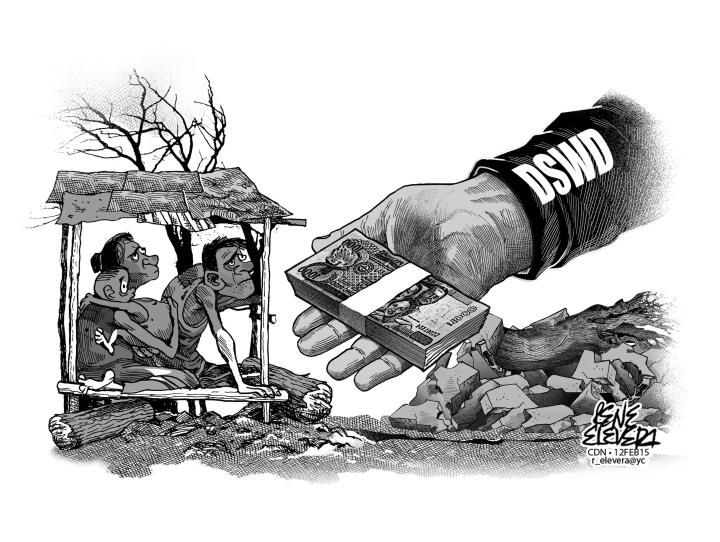With the Department of Social Welfare and Development (DSWD) standing firm on its policy on who is qualified to receive emergency shelter assistance (ESA), mayors of northern Cebu who objected to the guidelines have little choice but to accept their town/city’s share of the government assistance.
The main beef of mayors like Christopher Escario of Bantayan was that the ESA didn’t include those earning P15,000 a month or more.
The subtext of the lament is the coming election and a potential backlash that worries mayors. They anticipate complaints of unhappy constituents who will show their displeasure in their next vote.
The DSWD guidelines were clear from the start, so why were the mayor’s surprised?
They could have modified their position and asked the agency to extend some cash assistance to storm-beaten families for humanitarian reasons. These families still need the extra money after the calamity, even if the need was less dramatic as those who don’t earn at all or eke out a living way below the minimum wage.
Supertyphoon Yolanda didn’t respect income brackets or single out the poor; everyone in a geographic area, in this case 15 towns and one city of north Cebu affecting 610,000 people, was walloped.
We’re not surprised that Social Welfare Secretary Dinky Soliman is extending the ESA to those with the least in life, though we don’t fully accept her reason that not everyone could receive cash aid because there were limited resources like the 2015 annual budget of P1.9-billion.
Malacañang’s budget officials have repeatedly said there was no problem with cash aid or help for storm victims, that it was only documentation, paperwork and verification that slowed down the rollout.
Billions of pesos worth of aid was pledged and given to the national government from other countries.
Soliman would argue that nongovernment organizations (NGOs) as well as private groups like Habitat for Humanity and Gawad Kalinga extended their own housing assistance to victims of supertyphoon Yolanda.
Yes, the private sector helped fill in the big gap left by the government. The 30-meter danger zone limitation for rehabilitation sites is sound as well as required by law.
The role of mayors there was to identify vacant lots and help negotiate with private land owners to show compassion in selling part of their land or allowing their use for resettlement sites. Not all chief executives used their muscle here.
Rather than complain about a political backlash from Yolanda victims who don’t receive an ESA handout, mayors have to be resourceful and find other ways to get help. The World Bank and other international finance institutions are scouting for post-typhoon Haiyan recovery programs. Are the mayors ready with their blueprints?
Disclaimer: The comments uploaded on this site do not necessarily represent or reflect the views of management and owner of Cebudailynews. We reserve the right to exclude comments that we deem to be inconsistent with our editorial standards.

